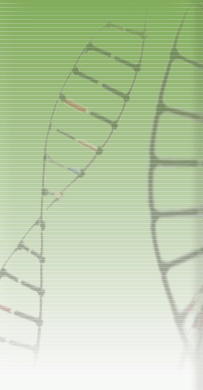|
 |
 |
   |
 |
 |
 |
| |
RNA polymerase II synthesizes mRNA from all protein-coding genes. The functional mRNA is obtained through multiple RNA processing steps. RNA capping is the first modification step to protect the message and affect downstream RNA processing. Capping reaction is tightly coupled to the transcription as capping enzyme selectively interacts with phosphorylated carboxy-terminal domain (CTD) of RNA polymerase II. Capping is involved in an early transcription checkpoint as well. It allows RNA transcripts extended further only when whose 5กฏ cap is successfully formed. It raises the possibility that there must be surveillance systems that also monitor the process of transcription elongation (and termination) and RNA processing during a later transcription phase. |
|
 |
 |
|
| |
DNA in eukaryotes is packed by wrapping around histone octamer composed of two copies of H2A, H2B, H3, and H4 and form a condensed structure called chromatin. Such a chromatin structure protects the genomic information and regulates its expression as well. Therefore, RNA polymerase and many other transcription factors must overcome the chromatin barrier or use it as a scaffold, with the help of many chromatin remodeling factors. In our lab, we are interested in the role of chromatin remodeling in tumorigenesis and study the molecular and cellular functions of tumor suppressors that couple chromatin remodeling to gene expression. The responsible genes for MEN1 (Multiple Endocrine Neoplasia Type 1) and HPT-JT (Hyper parathyroidism-jaw tumor) synthesize menin and parafibromin, respectively. They are tumor suppressors and play roles in target gene expression by inducing chromatin modification. |
|
 |
 |
|
| |
Variant histones in addition to canonical histones are important in determining the chromatin specificity and genome maintenance. The histone H3 variant, H3.3 is tightly coupled to the euchromatin specific epigenetic marks. H3.3 is deposited to the DNA in a replication independent manner by a histone chaperone, HIRA, and we believe that such histone chaperones play important roles in regulation of target gene expression and determination of cell fate. |
|
 |
 |
|
| |
Various arrays of histone modifications are enriched in euchromatin and heterochromatin differently. RNA polymerase II leaves specific histone modifications on its transcription track by direct and indirect coupling of elongation and histone modification. Those transcription coupled histone modification might play a role in RNA processing and/or recent transcription memory. We are interested in those transcription factors involved in transcription coupled histone modification and their regulation. |
|
|
 |
|
|




